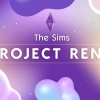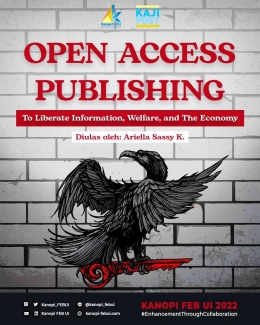In between all of the information accessed by college students around the world, they all thank the good lord for their lasting sanity, and Open Access information in their journey of writing their thesis at 3 AM. According to the Directory of Open Access Journals (DOAJ), there are over 10,000 fully open access (OA) peer-reviewed scholarly journals from 130 countries, offering 1.7 million searchable articles. The above numbers reflect that in less than a decade, almost one-third of the world's scholarly journals are now open to everyone with an Internet connection.
Open Access can be said to be a success and a blessing for scientists and students to acquire academic knowledge and put it to best use. Even the general public can just read out of curiosity and eager to learn, access to information has never been easier. But in economics, information affects economic decisions. Therefore one must ask and wonder, what's the economic impact? What's the economic theory that holds this model to be sustainable? Why is this a popular media in the academic world? How is it accessible in the first place?
Open Access: A Brief History
The concept of "open access" was defined first and formally by an international group of faculty members, publishers, and librarians that had come together in Budapest in 2002 by the Open Society Institute from the interest in using the Internet as facilitating access to scientific research that consolidated throughout the 1990s. Compared to the slow and static progress of the traditional closed publishing model, Open Access (OA) is a model for publishing scholarly peer reviewed journals, which can be freely read, as the publishing is funded through means other than subscriptions and made possible by the Internet (Lakso, 2011).
Publishers have operating costs, which includes article processing charges (APCs) as in editing, proofreading and typesetting, management and investment costs, and other costs. Management and investment are the marginal costs needed to establish and keep the journal running.
Other costs include promoting the journal, hosting and infrastructural services, sponsoring conferences, and other services. Usually, closed access publishers charge for access via subscriptions to cover those costs and make a profit, whereas many OA publishers or journals charge to publish. Due to increased subscription costs, closed access publishing is becoming increasingly unsustainable within the academics (Odlyzko, 2013) with prices estimated to have outpaced inflation at 250% in the past thirty years. This will slowly but surely diminish the scope of access to the scholarly literature as fewer organizations are able to pay such high costs.
Is Free Information Inevitable?
We associate normal commodities with the concept from Bertrand economics, which states that in a competitive market, the price of a product will move toward the marginal cost of producing another additional good. This principle has largely held true for material products where consumers can substitute goods. But it's very different when we try to apply this principle in the digital marketplace.
According to Sutton, digital products (including scholarly articles) get cheaper every year with growing fast-paced technology, and have become so cheap that the marginal cost is so small, it becomes almost impossible to measure within numerical metrics with accurate amounts.
Currently, one bit has a near zero price tag. Because of that, the default price of a digital product is zero, therefore, free--inevitably. Even in areas where there is no competition, digital products will move towards a zero price tag because the cost of entry in this marketplace is low, and as such any great idea will meet with competitors shortly after its debut.
Scholarly journal articles are no different from any other digital product in terms of distribution costs. One can argue that scholarly journals and articles are also subject to the "inevitably free" rule of pricing. This is not to say that there are no costs involved in producing the article online that users see, download, cite, print out, etc.
Because there are no additional costs for additional users, we have moved the payment mechanism away from that element in the publishing process that is near zero in cost (digital distribution of articles), and instead applied it to a stage of publishing where we are in fact consuming resources (for preparation for publication and other work).











